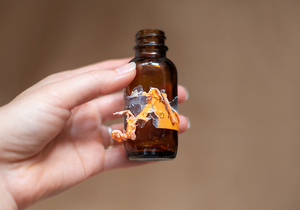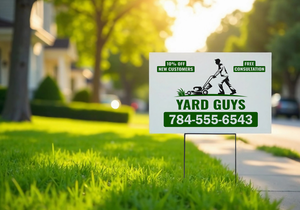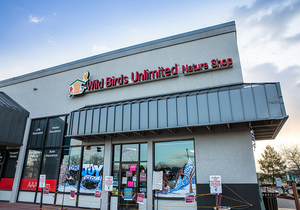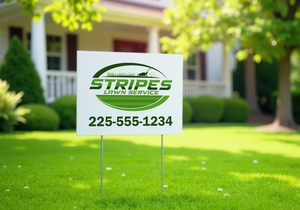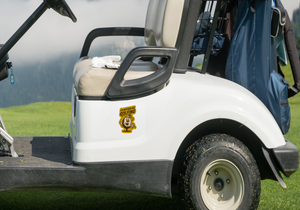What’s in a Label: A Guide to CBD Label Requirements

Here’s a fun experiment. Stop by any town in any state with legalized cannabis, blindfold yourself, and walk around swinging a stick. You might look a little strange to the locals, but we guarantee that, eventually, you’ll smack the brick wall of a local dispensary.
The point is not to weird out some nice people who might be wondering why a blindfolded stranger is swinging a stick, but to illustrate a simple point: access to cannabis in the United States has never been easier. We’re a long, long way away from the Reefer Madness of our grandparents’ generation.
As legal recreational cannabis has exploded in various states, tremendous growth and opportunity for businesses and individuals have come with it. A decade into the first legalization, the industry remains new, exciting, and evolving.

CBD – The Legal Gray Area
CBD, the non-active ingredient in cannabis (as opposed to THC), is not immune from this moment. Alongside legalized weed that gets you stoned and thinking about whether or not to eat an entire bag of potato chips, marijuana growers and companies are also developing innovative forms of CBD. Since these products are not psychoactive, users can get all the proven health benefits of cannabis — such as treating anxiety, sleeping issues, or seizures — without the blurred vision and munchies that usually come with it.
In many ways, the CBD market might be more lucrative for cannabis business owners, as CBD can be looked at as more of a supplement than a vice. If you’re someone who’s never smoked or ingested marijuana, it’s a little less “scary” for obvious reasons, primarily because it lacks the stereotypes and perceptions of THC (such as the aforementioned scarfing of potato chips). The average person might be more likely to try it out.
Not to mention CBD is in a bit of a gray area as far as government regulation. Whether it comes from cannabis or hemp, selling a CBD product is not limited to a marijuana dispensary; you may find CBD products in health and supplement stores.
Nonetheless, bud-ding (sorry) business owners must follow CBD label requirements very closely. There’s a huge opportunity to capitalize on this emerging market, but before you do anything, you must ensure you’ve met all CBD label requirements. Or else you’ll risk getting shut down before you get off the ground.
In this article, we’ll break down essential requirements and considerations when creating your CBD product labels. Plus, we’ll show you to have a little fun with the packaging.

CBD Label Requirements at the Federal Level?
There is no federal legalization of cannabis products in the United States, the specific CBD label requirements vary state by state. There are universal laws and policies, but cannabis business owners need to be aware of the nuances that come with each state.
We want to help you avoid getting shut down by the government.
The 2018 Farm Bill
Before we get into specifics, we need to note that in 2018, congress signed the Agriculture Improvement Act (aka the 2018 Farm Bill) into law.
This is significant because this specific bill made the cultivation, production, and sale of industrial hemp federally legal and regulated. Meaning that, on a federal level, businesses can sell any CBD that is derived from hemp containing less than .3% THC by dry weight. However, any CBD that comes from cannabis is still considered a Schedule 1 substance and is illegal to sell.
Confused by legalese? Don’t be.
In layperson’s terms, this means that if you make your CBD from hemp rather than cannabis, the federal government will let you sell it in any state.

CBD Label Requirements By State
General CBD Label Requirements for Every State
The FDA has refused to regulate any claims set forth by CBD manufacturers. However, they have set general CBD label requirements for cannabis business owners to follow, regardless of the state.
Although it can be a little tricky because the label requirements are a bit vague, it’s in every cannabis business owner’s best interest to follow the FDA’S CBD Packaging Guidelines just to be safe.
- Product Identity: It should be evident what the product is and that it includes CBD. The manufacturer and/or distributor should also be included.
- Net Weight: State the net weight of the product.
- CBD Content: State exactly how much CBD is in the product per serving and container.
- Directions for Use: Inform users with clear guidance on how to use the product.
- Batch Number: Let consumers know when the product was created.
- Expiration Date: Provide a date for when the product is no longer good.
Further, it is important to note that because CBD comes from cannabis, there are some specific marketing restrictions. For example, you cannot market CBD with cartoon or candy imagery. In general, the FDA hasn’t technically allowed any traditional marketing of the products.
There are still specific CBD requirements in each state, regardless of whether its source is cannabis or hemp. They include the following states:
California
California, one of the leading states when it comes to the cannabis business world, requires that CBD products have a specific warning label.
Cannabis business owners in California need to make sure their products have labels that read precisely the following: “This product can expose you to chemicals including THC, which is known to the State of California to cause birth defects or other reproductive harm.”
Moreover, California CBD producers must include specific information on the label about the product’s CBD and THC content, along with the product’s net weight.
Florida
Meanwhile, cannabis business owners in Florida have different CBD labeling requirements. Florida CBD labels must include a list of ingredients, a scannable barcode or QR code, and a clear statement that CBD is included in the product.
Colorado
Colorado was one of the first states to legalize recreational marijuana, so cannabis business owners tend to bring more experience and understanding. Their CBD label requirements are similar to the state of California.
Colorado cannabis business owners need to have a label that includes a list of ingredients, a statement that the product contains CBD, and the net weight of the product. The state also requires that the label include information about the distributor or manufacturer.
Washington
Washington is another leading state in the marijuana business world. The requirements for CBD products in the state of Washington are that a label includes the product’s name, the net weight, and a list of ingredients. It also must clearly state information and details about the CBD and THC content.

CBD Label Requirements Checklist
All of this is a lot to digest, we know. And as a cannabis business owner, we know you’re just trying to create the best product possible. Who has time to read between the lines of different FDA regulations?
That’s why we recommend using a simple checklist to ensure that your CBD label meets all of the necessary requirements.
Standard Information
CBD products are not exempt from the FDA’s general labeling requirements. Each product label must include standard information such as the company name, address, and contact information. It must also have a list of ingredients and nutritional information since the product is intended for human consumption.
- Contact Information (Address, Company Name, etc.)
- List of Ingredients
- Nutritional Information
Cannabis-Specific Information
Regarding specific cannabis label requirements, the FDA is a little less clear due to the gray areas regarding federal rules and regulations around cannabis in general. In terms of best practices, the following is wise to include:
- Marijuana strain name
- Date tested
- Lab name and test number confirmation
- Net weight in grams
- CBD%
- THC%

And Hey, Don’t Forget to Sell Yourself!
We know this is dense stuff. Meeting these requirements can feel overwhelming, and when you’re jamming all the legal requirements on a label, where is the space for your brand’s story?
We recommend pausing because the answer is that there is plenty of room. Just look at the world of alcohol. Many things need to be included on the label, but safe to say you’d agree that a can of Budweiser has pretty strong branding, right?
Here are essential factors for cannabis business owners to consider when creating cool and fun labels that also abide by CBD label requirements.
Tell Your Story
What makes your brand unique? The cannabis world is, as you know, extremely competitive. There’s a reason you believe people should choose your company over competitors, so let’s make sure people know it. Who are you, and why do you do what you do? What are the roots of your company? What are the goals? For one example, take a look at Northern Virginia Hemp Company, whose big pull is their family farm community.
In other words, don’t forget what makes you you.
Nail Your Product Description
Get creative with the copy of what your CBD product does. It should match the overall tone of your brand, whether that’s serious, playful, punny, informative, or something completely different. The point is that this is an opportunity for your brand to express itself. A clever product description can help reinforce your brand values to customers.
Consider Color Scheme, Font, and Other Visual Factors
Your brand should be holistic. The color scheme, font, and other visual elements should harmonize. Whether you’re creating labels, stickers, flags, or something else, having a strong visual identity across all materials is a major key to marketing success. If you need some help getting started check our CBD label design tips!
Just think about any iconic brand. Coca-Cola, anyone?
Design Your CBD Labels with the Stomp
Before you decide to throw in the towel on your CBD project because you don’t wanna deal with all the legalese and state laws, we beg you to stop. It’s not that complicated. Yeah, nailing CBD label requirements is a bit of an art, but it’s not impossible — especially when you have experts helping.
That’s why we recommend working with the Stomp to create your next line of materials. Our design tool makes uploading your art easy as pie and our support team is just a click away if you ever need help.
- Nashira Edmiston
